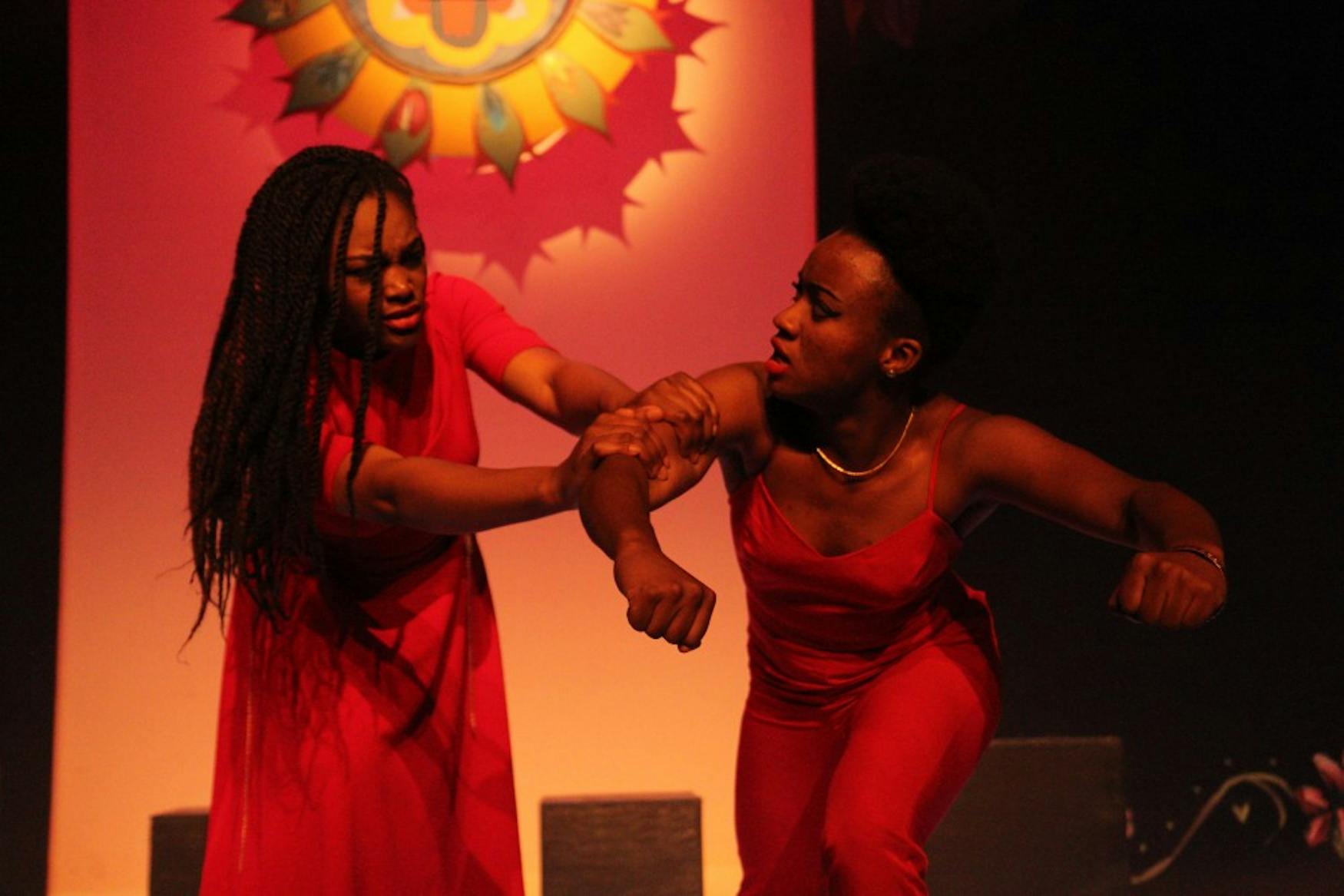‘for colored girls’ presents vibrant and unapologetic dramatic poetry
for colored girls who have considered suicide/when the rainbow is enuf is an excellent, relevant and powerful artistic experience, if only a good piece of theater. This is as true of the script itself as it is of Brandeis Ensemble Theater and the Brandeis Players’ production of it, which ran in the Shapiro Campus Center this weekend.
The production, first performed in 1976, is comprised of 20 poems, each tackling different aspects of the experience of being a black woman in America, and is usually performed by seven women (nine in this production) identified only by the colors of their clothing. The playwright, Ntozake Shange, calls this form a “choreopoem” and combined music and dance with her poetry to achieve a composite experience in a theatrical space.
The word “experience” is crucial, since it’s difficult to critique for colored girls as a traditional production. It has no single plot, its performers represent emotional spaces more than fleshed-out human beings; and at least based on viewing one performance, there is no clear structure to the order in which the poems are performed. But taken together, the poetry, dance and music form a deeply affecting portrait of what it means to be black and a woman in America today.
There are happy moments—a touching and hilarious story about a young girl discovering revolutionary Touissant L’Ouveture—but many more dark ones—the shock of an HIV diagnosis, horrifying domestic violence, wrapping one’s mind around both rape itself and how society misunderstands it. Above all else, for colored girls is raw and unapologetic; one of the poems in the play is actually about rejecting apologies from men. The honesty of the poetry, coupled with the impact of the actresses shouting it directly in your face, intentionally jars the audience at first. But ultimately the audience feels catharsis from the experience, likely reflecting the emotional process Shange underwent while writing it.
Leading this production was first-time director Ra Malika Imhotep ’15. While her passion for the material shines through, her inexperience is reflected in some of the play’s weaker elements. All of the staging is perfectly symmetrical, with many poems simply delivered by an actress planted square on center stage. The theatrical impact of that direction is lost when it is the only thing the audience sees during the performance, and my eyes started to wander from the action throughout the longer pieces. While the play’s diverse soundtrack provided an excellent atmosphere and transition, not once could I hear what the actresses said when the funk or salsa played over their dialogue. Most irritating, however, were the moments when the actresses rushed through their lines. Shange is a complex writer and it can be a struggle to keep up with her poetic syntax when it’s being spoken aloud rather than read on the page. I wished I could savor the most powerful lines for a little bit longer, but was instead forced to refocus on the next lines in order to keep up with the actor’s breakneck pace.
All of these problems, though, are technical. They are nuisances at best, and byproducts of for colored girls being a piece of stagecraft that doesn’t particularly care about the stage. What seems to matter to both the playwright and this director are the writing and the feelings that it conveys. Both of these elements were jaw-droppingly effective.
A lot of that can be chopped up to the cast. Nyah Macklin ’16 brought sizzling energy and power to her monologues, particularly in an early piece that turns the screw in an ex-lover. LaShawn Simmons ’18 likewise brought tremendous stage presence to each of her performances and developed clear highs, lows, pauses and bursts of energy in each of her monologues. Though she had only one featured solo poem, Jessica Hood ’15 earned her applause after her moving rendition of “somebody almost walked off wid alla my stuff.”
The lighting and set design, likewise, complemented the emotional fervor of the production well. The sparse design emphasized saturated lights and colors projected on a back wall, which transitioned to complement each actress’ costume as she spoke.
This production is thoughtful, angry, and it doesn’t really care if the audience likes it or not. The idea is to find emotional release and self-exploration for the actors, designers and director creating the piece; the audience’s reaction to the play is a secondary priority. For what it’s worth, though, for colored girls was an entertaining way to kill an hour and a half. Like the best pieces of entertainment and art, it left you with plenty to talk about afterwards, once you had processed the impact of what you had witnessed.



Please note All comments are eligible for publication in The Justice.